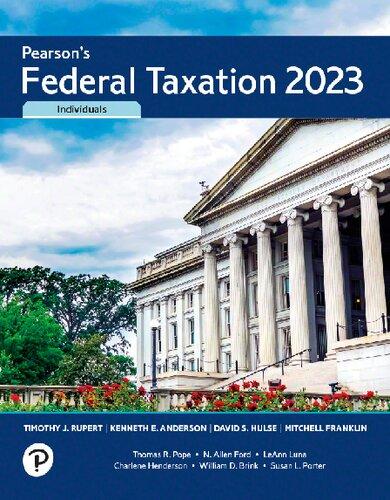I:18-29 Pass-Through Versus C Corporation. Twelve years ago, your client formed a C corporation with a $100,000
Question:
I:18-29 Pass-Through Versus C Corporation. Twelve years ago, your client formed a C corporation with a $100,000 investment (contribution). The corporation’s BTROR (Rc) has been and will continue to be 10%. The corporate tax rate (tc) has been 35% for the last 12 years, but because of a tax law change, the corporation's tax rate will be 21% for the foreseeable future. The corporation pays no dividends and reinvests all after-tax earnings in its business. Thus, the corporation’s value grows at its ATROR. Your client’s marginal ordinary tax rate (tp) has been 33%, and her capital gains rate has been 15%. Because of the same tax law change, your client’s ordinary tax rate dropped to 24% at the beginning of this year and will stay at that level indefinitely. Her capital gains tax rate will remain at 15%. Assume the corporate stock does not qualify for the Sec. 1202 exclusion for gain on the sale of small business stock. Your client wants you to consider three alternatives:
1. Continue the business in C corporation form for the next 20 years and liquidate at that time (32 years in total).
2. Liquidate the C corporation at the end of the 12-year period, invest the after-tax proceeds in a sole proprietorship, and operate as a sole proprietorship for the next 20 years. Your client will claim the 20% QBI deduction in the sole proprietorship case.
3. Make an S corporation election effective at the beginning of this year, operate as an S corporation for the next 20 years, and liquidate the S corporation at that time (32 years in total). Your client will claim the 20% QBI deduction in the S corporation case.
Regarding Alternatives 2 and 3, the sole proprietorship’s or S corporation’s BTROR
(Rp) also will be 10% for the next 20 years. Earnings from the sole proprietorship or S corporation will be taxed currently at your client’s ordinary tax rate (adjusted for the QBI deduction percentage), and your client will withdraw just enough from the business to pay her taxes. The remaining after-tax earnings will remain in the business until the end of the investment horizon (20 years from now). Show the results of each alternative along with supporting models and calculations. Which alternative should your client adopt?
Ignore the accumulated earnings tax for C corporations.
Step by Step Answer:

Pearsons Federal Taxation Corporations Partnerships Estates And Trust 2023
ISBN: 9780137730391
36th Edition
Authors: KENNETH E. ANDERSON, DAVID S. HULSE, TIMOTHY J. RUPERT Richard J. Joseph LeAnn Luna





